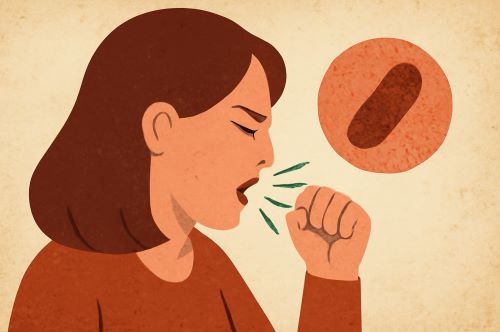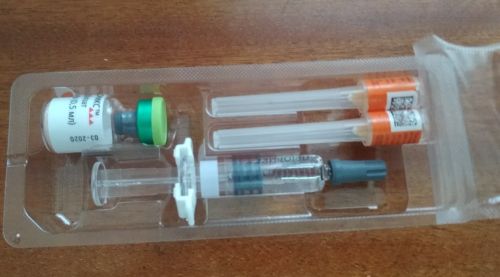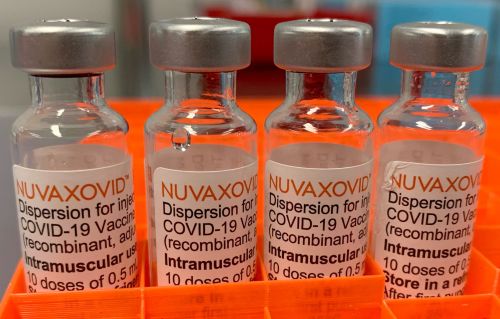

The sound of pertussis, that strangled gasp for air, is the voice of a disease we were once close to silencing. It is back not because it evolved, but because we hesitated.

By Matthew A. McIntosh
Public Historian
Brewminate
The Return of a Familiar Threat
There is a particular sound that once struck fear into the hearts of parents. A sharp, relentless cough followed by a gasping “whoop” for air, a sound as violent as it is tragic. It is not a relic of some bygone era. That signature noise, the defining symptom of pertussis or whooping cough, is echoing again through emergency rooms, pediatric clinics, and classrooms across the United States.
It is easy to assume that such diseases belong to the dusty pages of nineteenth-century medical texts. Yet in 2024, the Centers for Disease Control and Prevention recorded more than 7,000 confirmed cases of whooping cough nationwide. That figure, already higher than in recent years, is believed to be an undercount. Public health officials worry the true number is far greater due to missed diagnoses, especially in adults and adolescents whose symptoms often present more mildly.
This resurgence is not a one-off spike. As of mid-2025, the United States has seen a sharp increase in pertussis activity in several states, including California, Texas, and Washington. Localized outbreaks in schools and daycare centers have made headlines, but the broader pattern is more concerning, a slow, persistent return of a disease that was supposed to be under control.
A Preventable Disease, Loosely Prevented
Whooping cough is not new. It is one of the oldest documented contagious diseases, caused by the bacterium Bordetella pertussis. The pathogen targets the respiratory tract, releasing toxins that damage the lining and cause severe inflammation. In infants, the infection can be fatal. In adults, it can linger for weeks or even months, often dismissed as a stubborn cold or bronchitis.
The vaccine has existed in some form since the 1940s. It was initially a whole-cell vaccine, which proved effective but came with notable side effects. In the 1990s, it was replaced in the United States with an acellular version, which used purified components of the bacteria to reduce adverse reactions. While safer, it turned out to be less durable.
Studies now show that the acellular pertussis vaccine’s protection wanes significantly after a few years. For children who receive their full DTaP (diphtheria, tetanus, and pertussis) series in early childhood, immunity may fade before they even enter middle school. This has created pockets of vulnerability, especially when booster shots are delayed or skipped entirely.
Teenagers and adults, believing themselves protected, often become the vectors of infection. They may carry the bacteria with minimal symptoms, unknowingly transmitting it to infants too young to be fully vaccinated. This is the modern irony of pertussis, a preventable disease that thrives not in the absence of medicine, but in the gap between policy and practice.
The Role of Misinformation and Fatigue

It would be easy to blame the recent surge on anti-vaccine sentiment alone. That movement certainly plays a role, particularly in communities where vaccine refusal has become a form of ideological identity. But the reasons are more layered than slogans or Facebook memes.
In some cases, it is simple neglect. Parents, overwhelmed by a barrage of recommendations, fall behind on booster schedules. Pediatric appointments are missed. Reminders are ignored. The infrastructure of preventive medicine relies on routine and memory, both of which have suffered in the aftermath of the COVID-19 pandemic.
Others do not outright reject vaccines but express doubt about their necessity. Pertussis, after all, is not as visibly deadly as measles or polio. This perception leads to complacency. And when immunity begins to wane, as it inevitably does without a timely booster, the disease takes its opportunity.
There is also a subtler force at work. Vaccine fatigue has set in. After years of pandemic-related messaging, many Americans are exhausted. They are wary of yet another shot, another chart, another update from the CDC. That emotional fatigue, though less visible than organized resistance, may prove more dangerous in the long run.
Infants at the Highest Risk
The human cost of these lapses is most visible among the youngest. Infants under six months, especially those too young to complete the vaccine series, are at the highest risk of hospitalization or death from pertussis.
In 2023, the CDC reported a disturbing trend: infants accounted for more than half of all pertussis-related hospitalizations. Most of them contracted the disease from household members (often parents, siblings, or grandparents) who were unaware they were infectious.
To combat this, health officials have emphasized “cocooning” strategies, encouraging adults in close contact with newborns to receive the Tdap booster. But this requires both awareness and access, two variables that cannot be taken for granted.
Maternal vaccination during pregnancy is another key strategy. When administered in the third trimester, the Tdap shot provides passive immunity to the infant through placental transfer. Uptake of this recommendation has improved in recent years but still lags in underserved communities where maternal health care is fragmented or sporadic.
The Surveillance Gap

Tracking pertussis is more complicated than it might seem. Diagnostic tests are not always ordered, especially for adults. The symptoms can mimic other illnesses. And many cases go unreported.
Even when data is collected, it often arrives late or in fragmented form. The United States does not have a unified national immunization registry. States manage their own systems, some of which are underfunded or outdated.
This lack of real-time data makes it difficult to detect emerging patterns or respond quickly to local surges. Public health departments often play catch-up, responding to outbreaks only after they have spread.
The result is a delay that benefits the disease, not the community.
Rebuilding the Firebreak
So what would it take to turn the tide? The answer is not technological. We already have the tools – vaccines, boosters, public messaging, and maternal protection strategies. What is missing is cohesion.
Doctors must be more proactive in discussing pertussis risks with patients of all ages, not just children. Pharmacies and clinics should make boosters easy and inexpensive to obtain. Public health campaigns must go beyond fear and numbers. They must speak to the lived experience of illness, to the sound of that unforgettable cough, to the tragedy of watching an infant turn blue from oxygen deprivation.
There is also an argument to be made for vaccine reform. Several research groups are working on next-generation pertussis vaccines that might offer longer-lasting immunity. Until then, however, the nation is relying on a strategy that demands consistent vigilance and coordination — a strategy that will fail if treated casually.
A Preventable Tragedy
No child should die from whooping cough in the twenty-first century. No adult should unknowingly bring it home.
And yet, here we are, relearning old lessons at a painful cost.
The history of infectious disease is cyclical, but the cycle is not fate. It is shaped by choices. Some are made in hospital rooms, others in policy chambers, many more in the quiet moments when a parent decides whether or not to make an appointment.
The sound of pertussis, that strangled gasp for air, is the voice of a disease we were once close to silencing. It is back not because it evolved, but because we hesitated. And hesitation, as public health keeps proving, is one of the most dangerous habits we can afford.
Originally published by Brewminate, 07.21.2025, under the terms of a Creative Commons Attribution-NonCommercial-NoDerivatives 4.0 International license.


